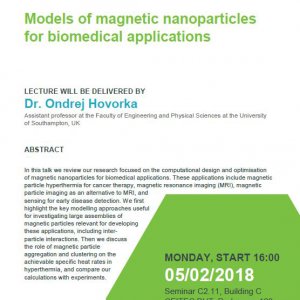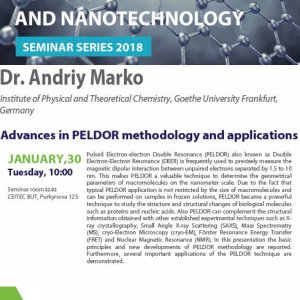Carbohydrates are involved in a lot of intra and extracellular signalling pathways. Interaction between carbohydrates and proteins belongs to the most important biological interactions and these interactions are widespread in all living systems.
Our research is mainly focused to lectin molecules. Lectins are carbohydrate-binding proteins that are highly specific for sugar moieties. Lectin-saccharide interactions relate to the virulence of several bacteria that are capable of acting as opportunistic human pathogens or fytopathogens. We investigate lectins from several opportunistic human pathogens (Pseudomonas aeruginosa, Chromobacterium violaceum), phytopathogens (Ralstonia solanacearum) and fungi (Aleuria Aurantia).
We use various methods of computational chemistry to understand interaction between proteins and carbohydrates.
Prediction of ligand position by molecular docking
Molecular docking (AutoDock, DOCK, ICM, Glide) to find the best binding orientations of saccharide molecule within the binding pocket of lectin [Mishra 2012a].
Molecular dynamics simulations, methods for binding free energy prediction
Methods of molecular dynamics (using AMBER software package) are used to simulate physiological conditions more precisely to further optimize the results of docking and to evaluate the energetic properties [Mishra 2008]. Explicit solvent methods are complemented by MMPBSA and MMGBSA implicit solvent methods [Mishra 2010]. The Linear Interaction Energy (LIE) method is also used to calculate binding affinities [Mishra 2012b] a well as Hamiltonian replica-exchange simulations [Mishra 2014].
High throughput virtual screening for lectin inhibitor design
Virtual screening and docking are used for identification of compounds that might inhibit interaction of sacharide with PA-IIL lectin (from human opportunistic pathogen - bacteria Pseudomonas aeruginosa) and be potentially used as a new generation of antibiotics. A specific goal is finding the best ligand (drug molecule) that competitively binds with the carbohydrate binding domain of the lectin, that can inhibit the attachment of P. aeruginosa to epithelial cells and cease the biofilm formation. Within the method, databases of ligands (e.g. ZINC database) are screened for best binding ligands using molecular docking (using e.g. AutoDock software).
High level QM methods to quantify the role of dispersion energy and CH-π interactions
Important component of protein-carbohydrate interaction is CH/pi interaction, which is form of dispersion interaction. We use density functional method with the empirical dispersion corrections (DFT-D) and high level ab initio methods (mainly coupled cluster methods at the complete basis set limit CCSD(T)/CBS) to study various lectins in which the dispersion interactions are dominant. [Wimmerova 2012, Kozmon 2011]
In silico protein engineering of lectin mutants with improved affinity/selectivity
Some lectin molecules display distinct differences in sugar preference despite only small differences in structure of binding site. We construct in silico mutants in order to analyze the principles driving the sugar preference. In silico mutagenesis (MODELLER/TRITON) is used to create mutant models and molecular docking (AUTODOCK/TRITON, DOCK/Chimera) to find the best binding orientations of lectins and saccharides and to asses approximate binding energy. Comparison of computed values with experimental one enables to asses reliability of the in silico method to correctly model the interaction and the preference changes in regard to mutations in the binding site [Wimmerova 2009, Mishra 2012a].
PUBLICATIONS
Kozmon, S.; Matuška, R.; Spiwok, V.; Koča, J.; 2011: Dispersion interactions of carbohydrates with condensate aromatic moieties: Theoretical study on the CH–pi interaction additive properties. Physical Chemistry Chemical Physics, 13 (31), 14215-14222. doi:10.1039/c1cp21071h
Mishra, N.K.; Kříž, Z.; Wimmerová, M.; Koča, J.; 2010: Recognition of selected monosaccharides by Pseudomonas aeruginosa Lectin II analyzed by molecular dynamics and free energy calculations. Carbohydrate Research, 345 (10), 1432–1441. doi:10.1016/j.carres.2010.04.021
Mishra, N.K.; Kulhánek, P; Šnajdrová, J; Petřek, M; Imberty, A., Koča, J.; 2008: Molecular dynamics study of Pseudomonas aeruginosa lectin-II complexed with monosaccharides. Proteins: Structure, Function, and Bioinformatics, 72 (1), 382–392. doi:10.1002/prot.21935
Mishra, S.K.; Kara, M.; Zacharias, M.; Koča, J.; 2014: Enhanced conformational sampling of carbohydrates by Hamiltonian replica-exchange simulation. Glycobiology, 24 (1), 70-84. doi:10.1093/glycob/cwt093
Mishra, S.K.; Adam, J., Wimmerová, M., Koča J.; 2012a: In Silico Mutagenesis and Docking Study of Ralstonia solanacearum RSL Lectin: Performance of Docking Software To Predict Saccharide Binding. Journal of Chemical Information and Modeling, 52 (5), 1250-1261. doi:10.1021/ci200529n
Mishra, S.K.; Sund, J.; Aqvist, J.; Koča, J.; 2012b: Computational prediction of monosaccharide binding free energies to lectins with linear interaction energy models. Journal of Computational Chemistry, 33 (29), 2340-2350. doi:10.1002/jcc.23081
Wimmerová, M.; Kozmon, S.; Nečasová, I.; Mishra, S.K.; Komárek, J.; Koča, J.; 2012: Stacking Interactions between Carbohydrate and Protein Quantified by Combination of Theoretical and Experimental Methods. PLOS ONE, 7 (10), e46032. doi:10.1371/journal.pone.0046032
Wimmerová, M; MISHRA, N.K.; Pokorná, M.; Koča, J.; 2009: Importance of oligomerisation on Pseudomonas aeruginosa Lectin-II binding affinity. In silico and in vitro mutagenesis. Journal of Molecular Modeling, 15 (6), 673-679. doi:10.1007/s00894-009-0464-7







